“I invented nothing new. I simply assembled the discoveries of other men behind whom were centuries of work. Had I worked fifty or ten or even five years before, I would have failed. So it is with every new thing.” – Sir Henry Ford
From what felt like day one being involved in this industry I remember reading in books, magazines and hearing people saying…
1) You MUST specialise.
And
2) You MUST have a unique and recognisable style.
… but, like most I guess, when I first started out I didn’t have a clue what it was I wanted to specialize in, and I certainly didn’t have a recognisable style; geez when I look back at my earlier work, there’s definitely no consistency as every photo shoot looks like it could have been from a completely different photographer.
Now both made complete sense but how on earth do you get to this point of knowing what you want to specialise in and also having your own unique and recognisable style?
Well with the specialising, if I’m honest I just went out and tried everything. If you’ve ever heard the phrase ‘spinning too many plates’ well, this was me. I tried Weddings, Family Portraits, Baby Photos, Food Photography, Architectural and so it goes on but by doing so I very quickly realised what I didn’t like to do which by default left me with what I did like to do … Portraits; the Style thing though was a completely different ball game.
One thing I did when I first started out was to set up a blog; not with the intention of gaining masses of followers or anything like that but rather as something to motivate me and get me out to produce content. You see by committing myself to writing one post a week I was ‘hung by the tongue’ to get out with my camera to create a new picture each and every week that I could then write about. As the blog grew and gained more followers than just my wife, I introduced a Monthly Interview section where each month I would interview another Photographer who’s work I liked and/or was well known in the Industry and ask them a set list of questions; one of which was about style and in particular, how to develop your own.
99% of the responses I got back basically said that you can’t force your own style; it just happens after a period of time and lots and lots of time behind the camera and in front of the computer screen. One Photographer in particular said that he believed your own style is heavily influenced by your life experiences from a child to adulthood, your likes and dislikes and this definitely rang true with me as in my own portfolio you’ll never see pictures of white backgrounds, balloons and people jumping in the air clapping their hands. Not to say there’s anything wrong with that but it’s just not for me and that’s not a conscious decision I made but just a style I was never drawn to.
So if style comes from your life experiences, likes, and dislikes where do you start? Surely you have to have a starting point that you can move on from and this would likely mean copying?
It’s at this moment when you mention copying that there’s a sharp intake of breath across the Photography World…”Copy? You can’t copy! You MUST have your own unique and identifiable style.” Well that’s all well and good and I get the whole unique thing but what I’m talking about here is using copying as a way to develop yourself, not plagiarism.
The best way I can explain this is by going off topic for a moment so let’s choose the Music Industry as a perfect example…
Copying is widely accepted within the music industry. Every day you can listen to the radio and almost every other track you listen to will be either a cover version or have parts of one song mixed in to create a completely different track, and this is just the norm. You mention copying in Photography though and lightning bolts will fall from the sky.
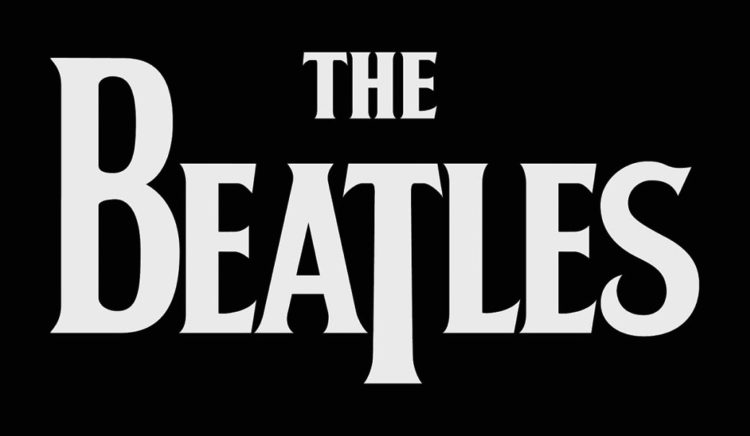
Back when they started out, The Beatles would tour all the Working Men’s Clubs, play at the Cavern in Liverpool and such places. But the music they played would be cover versions of artists such as Elvis, Buddy Holly and Jerry Lee Lewis. In fact it was Paul McCartney who said they only started writing their own music so they could perform their own unique sounding gigs, and you see that’s the point here…they would copy other artists’ work until eventually their own style developed and became a sound instantly recognisable as them.
One of my favourite tracks of all time is “Every Breath You Take” by The Police with its famous guitar riff; you hear just a few seconds of it and instantly you know the track.
Now, American Rapper, Puff Daddy in one of his own tracks, used the same guitar riff in his song ‘I’ll Be Missing You’ released following the death of his friend and fellow rapper The Notorious B.I.G. So, same guitar riff, completely different song, and this goes on all the time and again is widely accepted. Now granted this may not be the very best example as this lead to a law suit due to no permission being granted to use the guitar riff, but you get my point right?!?
Moving away from the Music Industry but still on the subject of copying, let’s take a quick look at the Movie Industry and in particular, Movie Posters and art work.
Here’s an example where copying has been used to create a multitude of different movie posters. I was first aware of this pose with the Man and Woman leaning against each other, when the film Pretty Woman was released, but just take a look at all the similar examples here. Now I don’t know which one was used first, nor do I suggest the pose is copyrighted in any particular way, but here is a prime example of how something from one piece of work can be used in another to create something new.
To reinforce the point check out these many examples here where we see a similar concept of ‘Person Running’ being used.
Occasionally I run training days where I’ll teach attendees an area of Photography and Retouching. The interesting thing here is, let’s say each of the attendees has with them their own computer to work on and I give each of them the same RAW file to work with. I then start working through the retouching step by step for them to follow and from time to time I’ll stop what I’m doing and wander around the attendees to see how they are getting on. Now you know what…without fail, even though I’ve shown them the exact steps to do, every one of the attendees will produce something that looks a little different. And this isn’t because they’ve done something wrong, but because they may have altered some of the settings I suggested to suit their own taste…does that make sense?
“We want you to take from us. We want you, at first to steal from us, because you can’t steal. You will take what we give you and you will put it in your own voice and that’s how you will find your voice. And that’s how you begin. And then one day someone will steal from you.”– Francis Ford Coppola (Screenwriter, Film Director & Producer)
A great place for getting ideas and inspiration to ‘copy’ from is the Internet; I’m forever trawling around and coming across pictures that I like the look of and look to see how I can use an element of it such as the lighting style in my own work.
One such example is this picture that I saw by American Photographer, Joey Lawrence (Joey L) that he made for a National Geographic Channel program called ‘Killing Lincoln.’
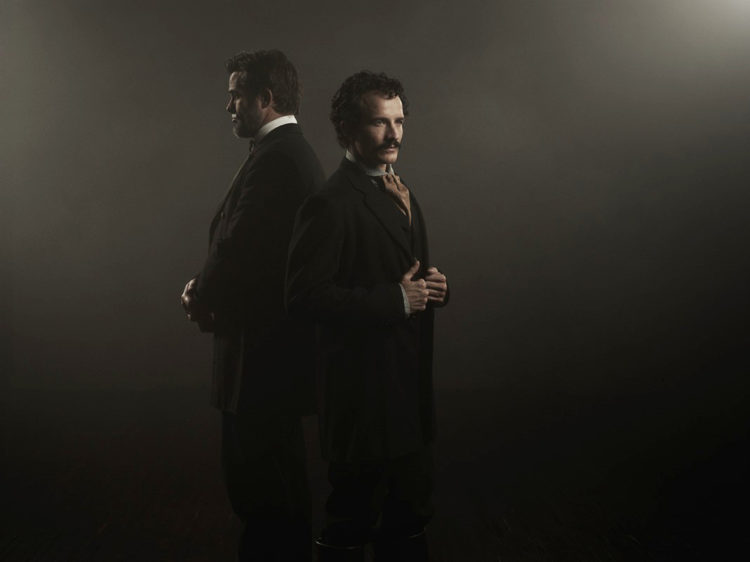
I was initially drawn to the pose, which for two people was certainly different with them being back to back in such a way, but also the lighting which I thought worked wonderfully. Straight away I thought the pose and lighting style would work great in a picture I was due to be taking of World Campion Kick Boxer Steven ‘Pocket Rocket’ Cook and his Coach, Michael Graham.
One of my all time favourite photographers is Annie Leibovitz. I just love everything about her pictures, in particular the portraits and group photographs of celebrities for publications such as Vanity Fair. The lighting is just so incredibly natural as are the poses and expressions she draws out of her subjects.
Scouring the internet one day I came across this picture of Actors, Sir Ian McEllen and Patrick Stewart photographed by Annie, and as is my usual practice I took a screen grab and stored it in my ‘Inspiration and Ideas’ folder on my computer.
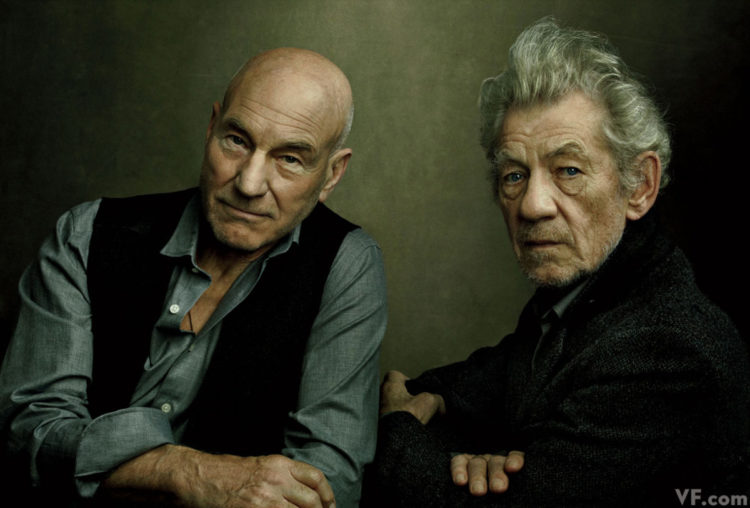
This is something I do all the time and did from day 1, only then it meant tearing pages out of magazines and sticking them in a scrap book; now things are so much easier with screen grabs and taking pictures with your mobile phone.
It just so happened that a while later I was photographing a couple of guys from a group called The Bearded Villains; very stylish with flat caps, waist coats and fob watches, and the picture I’d saved earlier came to mind. Similar lighting, pose and the textured background would work a treat on these guys so that’s exactly what we did; again…taking something from one and using it in another to create something new and different.
So when I say copying I say that in the loosest term. We’re not talking plagiarism here trying to recreate an exact copy of another piece of work but instead being inspired; yes inspired is probably a better word for it.
“Those who do not want to imitate anything, produce nothing.”– Salvadore Dali
Anyone who knows me knows that I’m an animal lover and that going on a safari is high on my bucket list. I’ll do it one day for sure, but in the mean time one on-going project I have running and am constantly adding to is my Animals Project.
This is a Photography and Retouching project where I go to places like Wildlife Parks and Zoos to photograph animals in captivity. I’m there for as little time as possible because I find them quite depressing, but what I then do with these photographs is use Photoshop to cut them out of their captive scene and place them into a new scene that I’ve created and has the look and feel of their natural habitat. For me, doing this feels like setting them free and was actually the first time I think I ever felt emotionally moved by photography.
Don’t get me wrong, I’m not about to turn all heavy and deep on you but it just was. It was incredible to me how impactive it was to separate an animal from its environment and see how it changed the mood and overall feel.
Shortly after starting on this project I became aware of Photographer, Nick Brandt and his wildlife photographs from Africa. NEVER had photography stopped me in my tracks before such as his work; incredibly powerful, emotive, beautiful imagery.
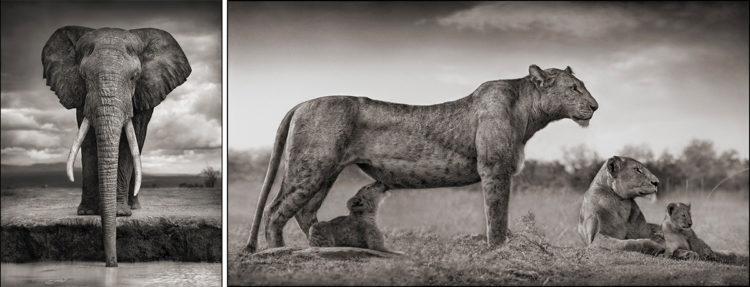
So could I ‘take’ something from Nick Brandt’s work that would add to and enhance my own?
Maybe it would be just to go with Black & White as opposed to colour?
Now, I’m no Nick Brandt, but by trying to copy the look of one of his pictures and see how it would turn out, helped me to produce my own piece because no matter how hard we try to copy, we never will! The result? … pieces of work that I’m actually really quite proud to have hanging on the office wall.
So copying IS a good thing. It gives you a starting point, a beginning that you can move on from and with time, after copying over and over again your own style will show itself.
“You can’t shortcut the shortcut because Copying IS the shortcut.” – Glyn Dewis
As an artist you’ll force yourself to overcome challenges, develop your skills and so develop your portfolio. As someone in business, by going through the process of planning and preparing your own work, it will help you to hone those skills when working with clients.
In the end my ultimate goal was to have a style and to be hired for the kind of work I wanted to do as opposed to take on whatever came my way. But, in the process of developing that style and those skills as I copied, if someone ever posted online ‘that looks like a Joel Grimes picture or an Annie Leibovitz picture’ do you think I was concerned? Heck no! That’s a compliment and shows you’re on your way to developing your own style.
Copy lighting styles, copy poses, copy book covers, movie posters; just get out there and copy, become inspired and watch your own unique and recognizable style and portfolio grow.
Photography is a whole lot of fun and for those of us who never excelled or were encouraged in art at school, now armed with a camera, some great software and lots of practice, the sky really is the limit.
“Don’t wait until you know who you are to get started.” – Austin Kleon
So from this day on you have my blessing to get out there and become a Thief.
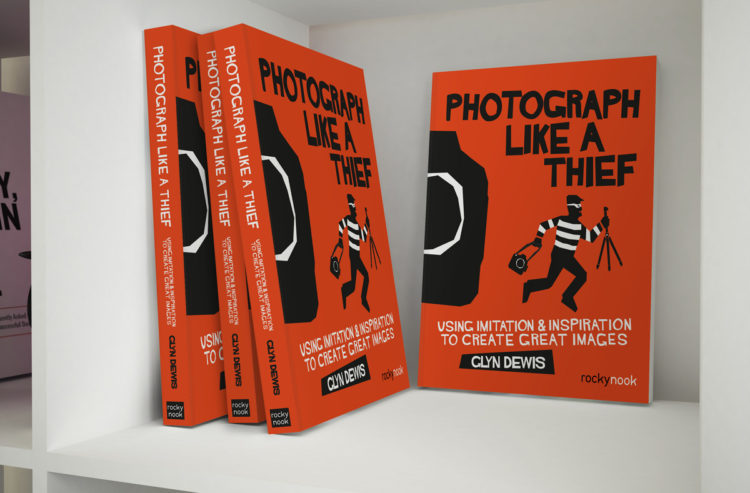
You can see more of Glyn’s work at GlynDewis.com, check out his tutorials on YouTube and classes on KelbyOne, and follow him on Instagram, Facebook, and Twitter.



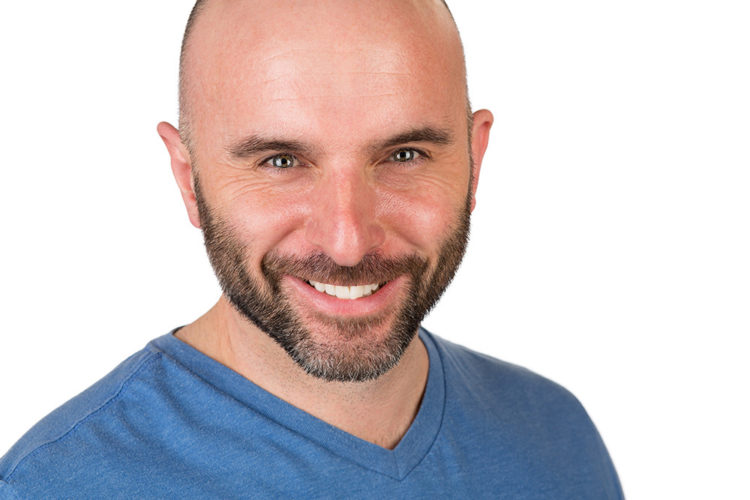
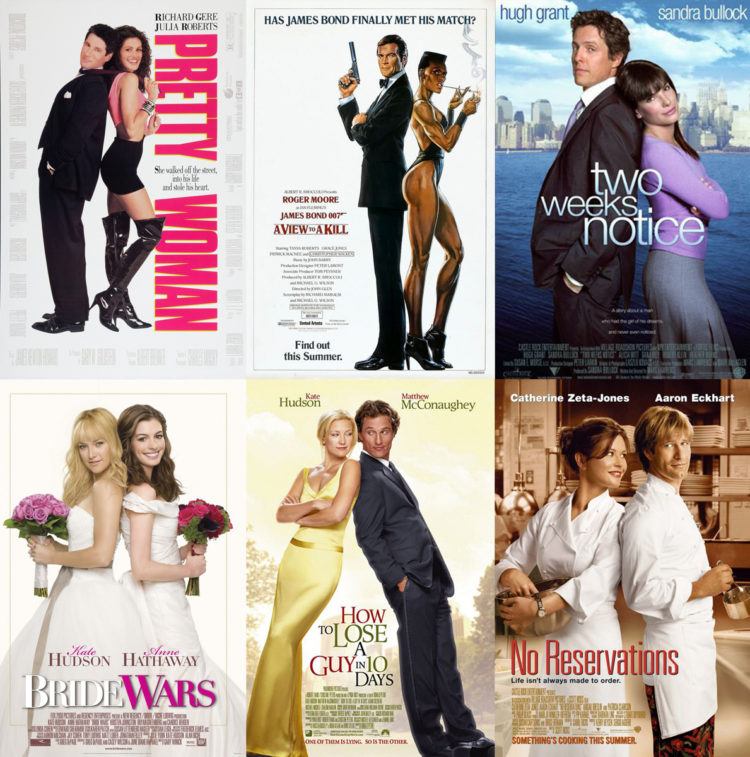
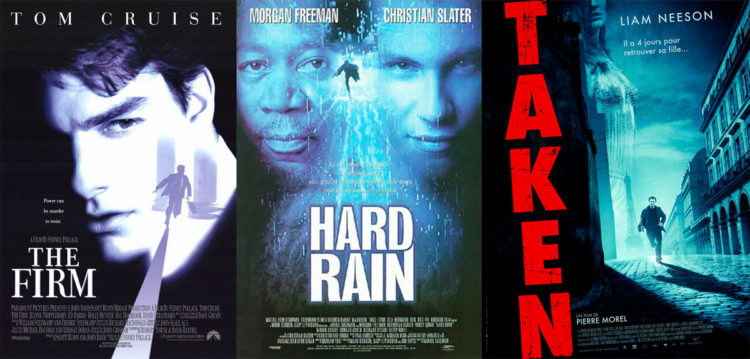
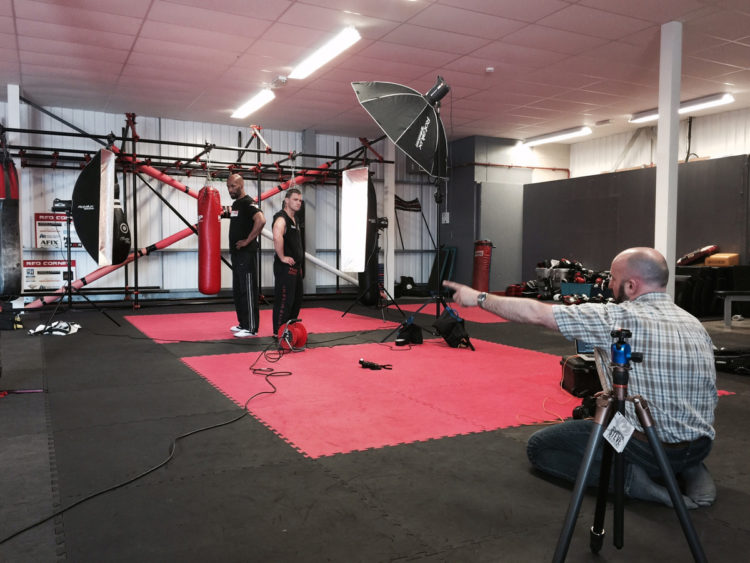
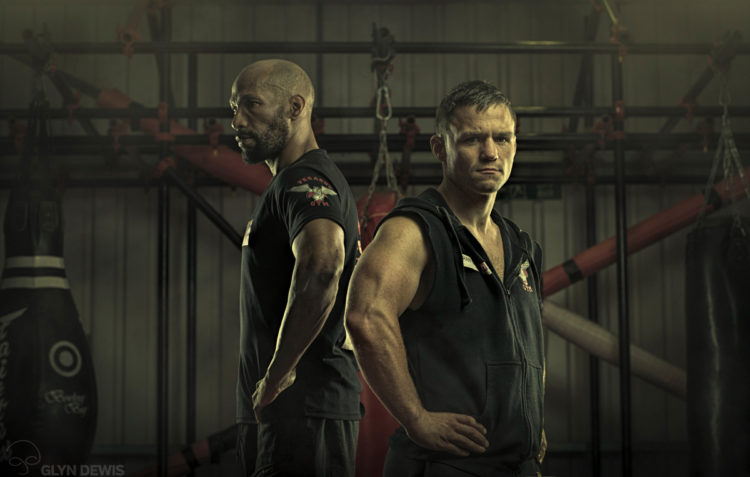
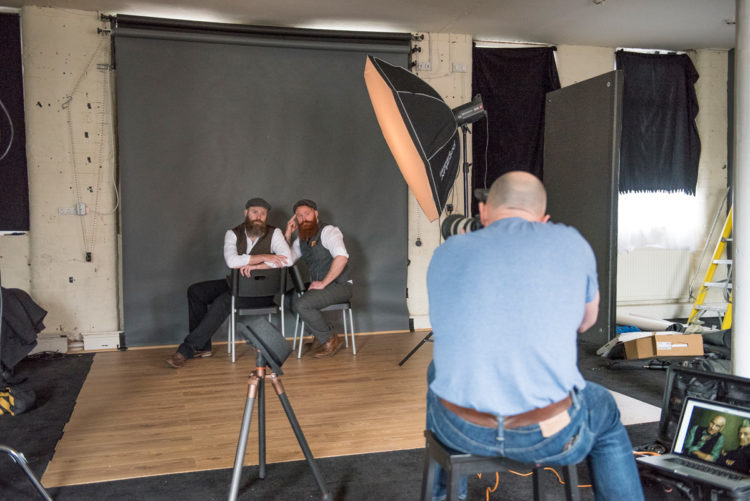
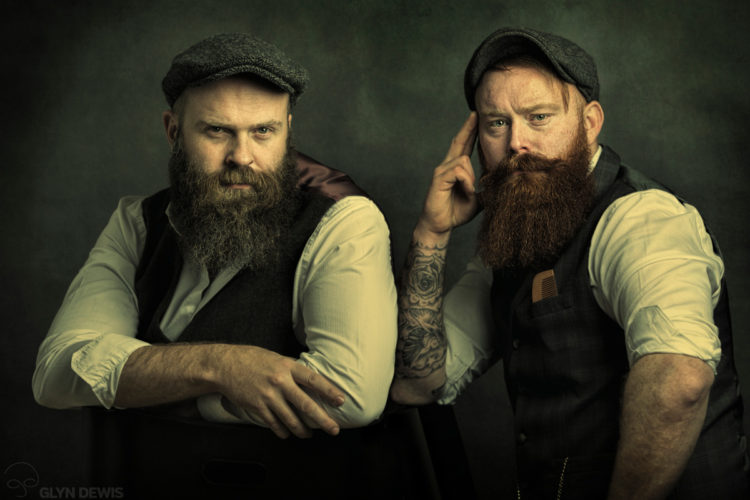
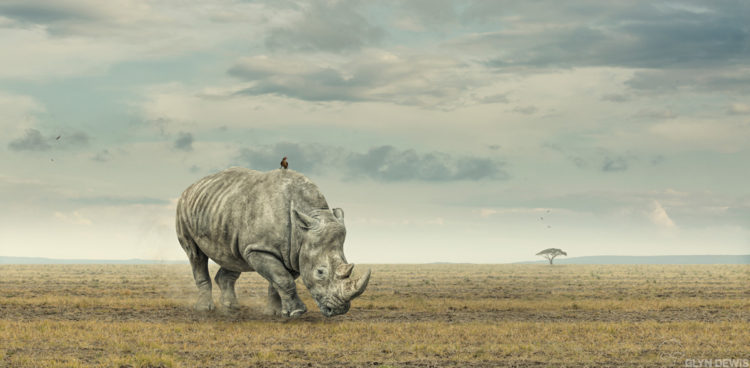
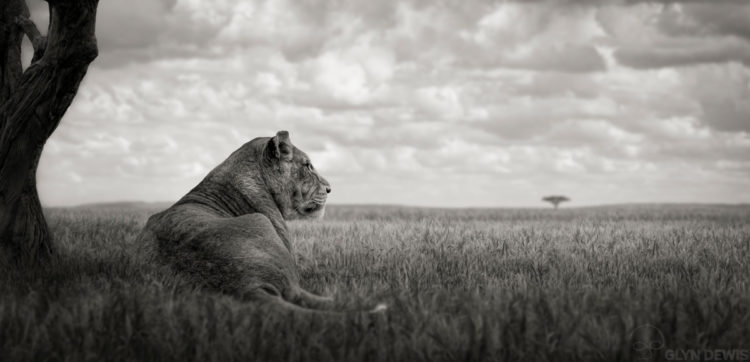
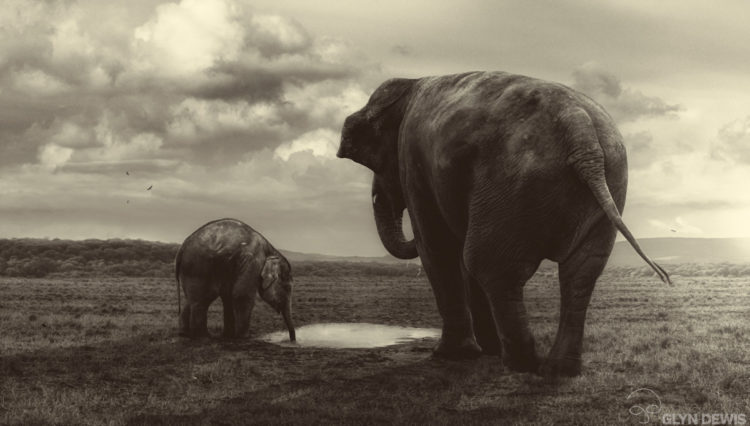

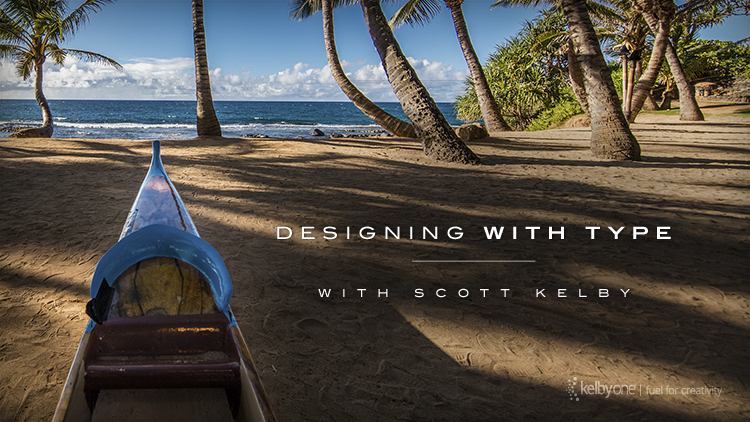
Great post Glyn, happy to see you back on here again mate :-)
Thank you mate
I’d never seen that particular shot of Patrick and Ian before! *swoon!* They are incredible human beings. You are too, Glyn. Love your work. You’re an excellent instructor as well. Thank you so much for sharing your skills in thievery :)
The Annie Liebovitz picture of Patrick and Ian is quite something huh :)
Thanks so much Katie for your kind words; they’re very much appreciated.
Best wishes,
Glyn
Excellent Post Glyn! I love what you had to say here. Cheers Mate!!
Thanks so much Michael; glad you enjoyed the read.
Go for it Glyn. Love it!!
Cheers Steve
Glyn, great post! Really liked your approach of not being ashamed of being inspired by other people´s work in order to improve yourself and create your own style. Talking about inspiration – how do you do that post processing of Sir Ian McEllen and Patrick Stewart´portrait? I really like the tones there – do you have any tutorial in your site or any indication where I could learn it? I am an amateur photographer from Brazil who just started following you on Instagram too! Thanks!
Hi Robert. Thanks so much for commenting and your kind words; great to know the post was helpful in some way. As for the retouching of the Bearded Villains guys I’ll be recording something for that real soon ;)
Great post Glyn!! You know how much I love your photos and your inspiration but this blog makes me realize I better specialize in something quick :)
Excellent article Glyn, I find I steal inspiration from many sources, primarily painters. By the way, JoeyL is Canadian not American. But he is an incredible artist!
Hi Glyn – excellent article and this confirms something that occurred to me when I first started photography seriously – just over one whole year ago. This is visual music – improvisation. I am also a musician and enjoy playing jazz. The greats had their own distinctive styles – easily distinguishable. Sound, inflection, phrases etc. But each great voice was derived from one which went before and there is a language of jazz – small phrases, licks and riffs, put together to make a meaningful musical sentence. I’m finding my experience of photography to be similar – I’m looking at other peoples work, their style and incorporating it into my own. Learning the language if you will. I’m sure some time in the future I’ll discover my distinctive voice. btw – bought your excellent photoshop book and loving it.
Great article, and now I know what the title of your book means! ;-) I like what you said about animals, and your way of setting them free. Right there that tells me you are a good human being. I am no longer just a follower, Glyn, I am now an admirer (even though you never did reply to my email :-))
All the best,
Mac
And to prove the point Glyn is stealing a book idea from this book “steal like an artist” LOL https://www.amazon.com/dp/B0074QGGK6/ref=dp-kindle-redirect?_encoding=UTF8&btkr=1#nav-subnav
I would still be careful of what you are going to copy, and where you are going to show it. Anybody remember this article? https://www.dpreview.com/articles/1166562748/imitated-image-copyright-case Personally I think this is totally crazy that somebody would sue someone over producing an image that is clearly not a photocopy. But copying is just how we learn, baby will never pick up a spoon if it’s being raised by the wolves.